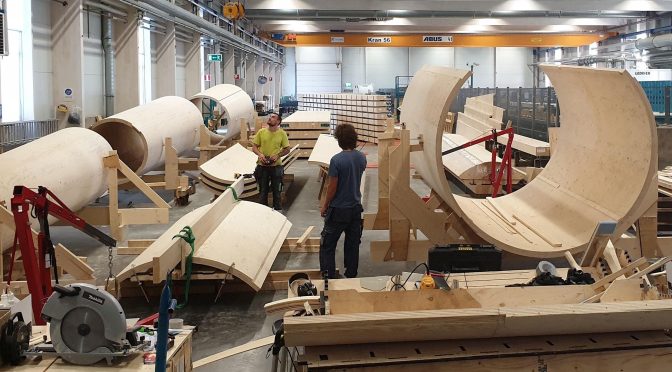The Sustainability Forum 2022 was a great opportunity to brainstorm with our suppliers in finding new ways to make the renewable energy supply chain more sustainable. Here are some of the great ideas that are already being put into practice.
There can be denying that we live in challenging times and this makes the need for a transition towards sustainable energy even more urgent than ever. Enel Green Power has ambitious plans in this respect, but it is unable to achieve them alone. It must work together with all stakeholders, particularly suppliers. And that was the main call to action during the third edition of the Sustainability Forum, which was held in an online format on March 10. The subject matter was: “From Raw Material to Net Zero.”
A more resilient supply chain
EGP’s Salvatore Bernabei opened proceedings by commenting on the fact that current geopolitical volatility and the Covid pandemic have both shown the fragility of globalization. “We need less globalization and more regionalization in order to create a more sustainable and more resilient supply chain that is less subject to volatility. We need a monitoring system that is more transparent and more traceable.”
His views were shared by Luca Noviello, our Head of Procurement, who explained that EGP’s projected increase in renewable installed capacity between now and 2030 will entail an equally vast increase in the amount of material we use. In addition to EPD (Environmental Product Declaration) certification, which has already been a condition for our suppliers in several tenders, EGP is also introducing a stricter vetting system for its supply chain. This refers to the traceability of materials, the CO2 emissions involved in the production of equipment, as well as to the use of recycled materials and their potential for reuse at the end of their life cycle. He also described procurement as “the backbone of decarbonization and electrification.”
Several of our suppliers spoke during the course of the Forum, offering encouraging insights. Jonas Pagh Jensen, for example, is an EHS (Environmental Health and Safety) specialist at Siemens Gamesa, a wind turbine manufacturer. He argued that 71% of the CO2 footprint of a wind turbine comes from the steel that goes into making it. He believes that, by decarbonizing steel production, the carbon footprint could be reduced by 50%.
Wonderful wood
Otto Lundman, co-founder and CEO of Modvion, a Swedish company, has an even more radical solution: using laminated veneer lumber, rather than steel or concrete, for building the wind turbine towers. Wood might be weaker than steel, but it is lighter and easier to transport, and can be produced more cheaply through sustainable forestry, in addition to having far greater potential for recycling at the end of life. Using wood for the world’s new wind turbines could require an estimated 50 million cubic meters but, as Lundman pointed out, that’s a far less daunting statistic than it sounds: Sweden, which he modestly describes as “a relatively small country,” produces 120 million cubic tons of wood a year.
“Fortunately, we only need to look at nature in order to see how things can be done differently. Trees absorb carbon dioxide from the atmosphere as they grow and they store it in a great building material: wood. We call it nature’s carbon fiber.”
Otto Lundman, co-founder and CEO, Modvion
As for the sustainability of materials for solar energy, Jinko Solar’s General manager for Italy and Latam Alberto Cuter talked about the production of photovoltaic panels. He announced that all of its factories will be run entirely with renewable energy by the year 2025.
“Our products provide clean energy, but if we have to use coal in order to make these products, then we are just shifting the problem from one area to another, and that’s why we need to be totally renewable.”
Alberto Cuter, General manager for Italy and Latam, Jinko Solar
The human factor
But, as we often point out, the just energy transition isn’t only a question of CO2 emissions: it’s also about people. As Massimo Lombardi, our Head of Sustainability Ecosystem, pointed out, we also need to keep an eye on respect for human rights in the supply chain. This is another key element in our assessment of suppliers.
Can we do everything alone?
The simple answer is no and that is why the Global Alliance for Sustainable Energy was created, in order to encourage the adoption of best practices and the definition of sustainability standards.
By promoting sustainability in all areas, the Alliance will work to improve transparency, accountability, inclusivity, resource efficiency and responsibility along the entire length of the renewable energy industry’s value chain.
The Alliance’s goal is to reach a just transition to net-zero and socially responsible energy production, redefining the meaning of “Sustainable energy” by working together with civil society, end users, policy makers, academic institutions, suppliers and utilities.
The Sustainability Forum also included a session on job transformation, during which Chiara Palmisani, our Head of Sustainability Rest of Europe, talked about various online skilling and reskilling programs. These have been set up with a working group of contractors and suppliers and are available for everyone on the Enel4Share open platform.
The Sustainability Forum covered all areas of the supply chain, but if one comment summed up its purpose, then it came from Modvion’s Otto Lundman, who concluded his speech with a powerful call to action for the entire energy industry: “Let’s build renewables with renewable materials.”


